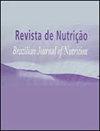东北经济之都的食物环境:食物储备的社会与地域差异
IF 0.5
4区 医学
Q4 NUTRITION & DIETETICS
Revista De Nutricao-brazilian Journal of Nutrition
Pub Date : 2022-01-01
DOI:10.1590/1678-9865202235e210060
引用次数: 1
摘要
【摘要】目的通过福塔莱萨市不同类型的食品销售点,对社区食品环境进行表征,并根据社会人口统计指标对其分布进行关联。这是一项在福塔莱萨市进行的生态研究,其中使用了2018年和2019年该市所有持牌食品商店的位置以及卫生监测服务的数据。建立了地理参考地图来说明这些设施的空间分布。相关分析验证了食品销售点与社会经济数据之间的关联。p≤0.005为显著值。结果我们发现,社会经济水平较高的社区中食品商店的集中度更高。小吃店(n=2051;27.7%)和餐馆(n=1945;26.3%),数量较多,且与人类发展指数和平均收入呈正相关。超市和大卖场(n=288;3.9%)和街市(n=81;1.1%),数量较少,空间分布最差。结论我们观察到不同类型食品网点分布的社会经济不平等。周边社区缺乏多样性,店铺数量有限,再加上销售有害健康食品的店铺集中,这些都阻碍了人们做出健康食品的选择。本文章由计算机程序翻译,如有差异,请以英文原文为准。
Food environment of the economic capital of the Northeast: social and territorial disparities in the availability of food stores
ABSTRACT Objective Characterize the community food environment through the different types of food outlets in the city of Fortaleza and associate their distribution according to sociodemographic indicators. Methods This is an ecological study carried out in the city of Fortaleza in which data from the Health Surveillance Service were used with the location of all licensed food stores in the city in the years 2018 and 2019. Georeferenced maps were set up to illustrate the spatial distribution of the establishments. Correlation analyses were performed to verify the association between food outlets and socioeconomic data. Values of p≤0.005 were considered significant. Results We identified a greater concentration of food stores in the neighborhoods with better socioeconomic levels. Snack bars (n=2051; 27.7%) and restaurants (n=1945; 26.3%), were in greater quantity and exhibited a positive correlation with the Human Development Index and average income. Supermarkets and hypermarkets (n=288; 3.9%) and street markets (n=81; 1.1%) were in a smaller number and had the worst spatial distribution. Conclusion We observed socioeconomic inequalities in the distribution of different types of food outlets. The little diversity and the limited number of establishments in peripheral neighborhoods, besides the centralization of outlets that sell food that is harmful to health, constitute obstacles for the population to make healthy food choices.
求助全文
通过发布文献求助,成功后即可免费获取论文全文。
去求助
来源期刊
CiteScore
1.20
自引率
12.50%
发文量
24
审稿时长
6-12 weeks
期刊介绍:
Revista de Nutrição is former Revista de Nutrição da Puccamp, founded in 1988. It is a bimonthly publication every four months and it is of responsibility of the Centro de Ciências da Vida, da Pontifícia Universidade Católica de Campinas . It publishes articles that contribute to the study of Nutrition in its many sub-areas and interfaces; and is open to contributions of the national and international scientific communities.

 求助内容:
求助内容: 应助结果提醒方式:
应助结果提醒方式:


